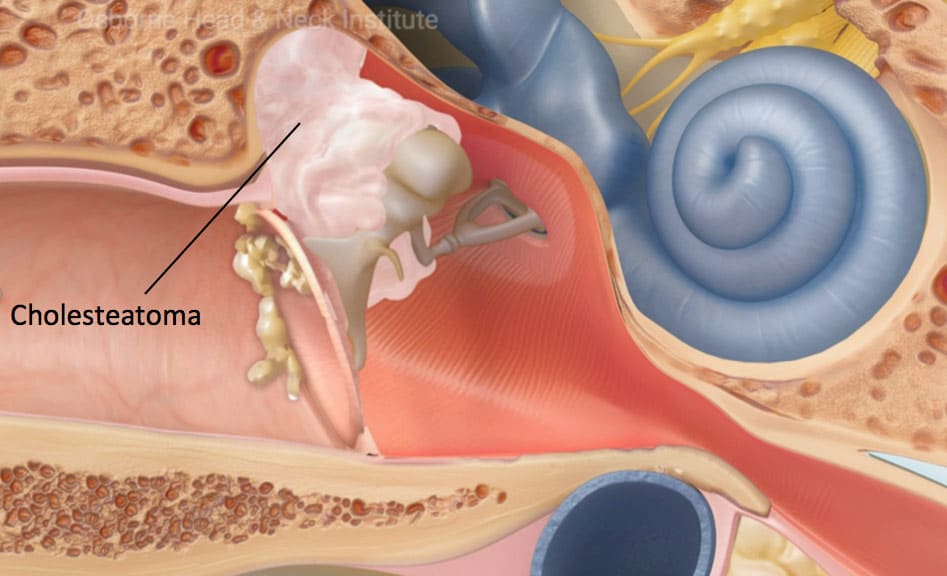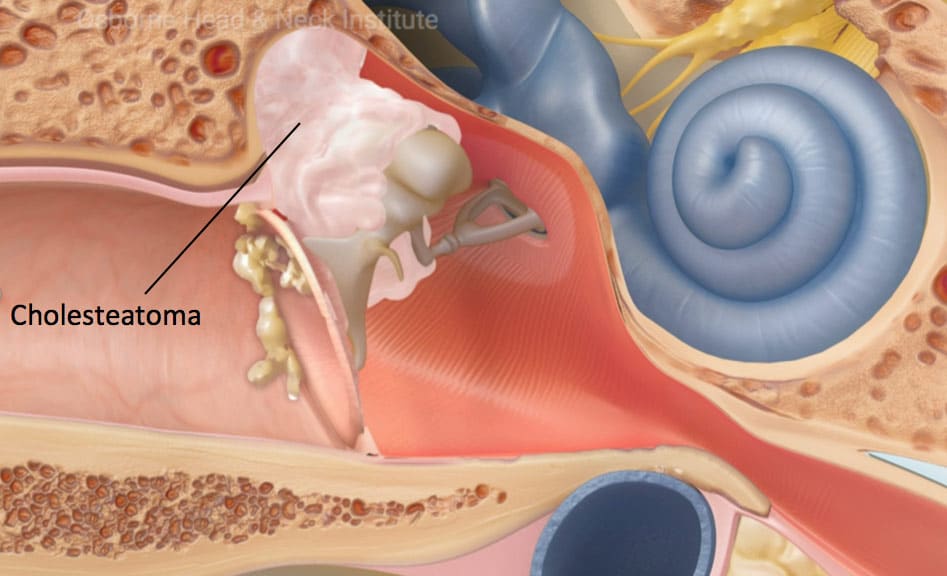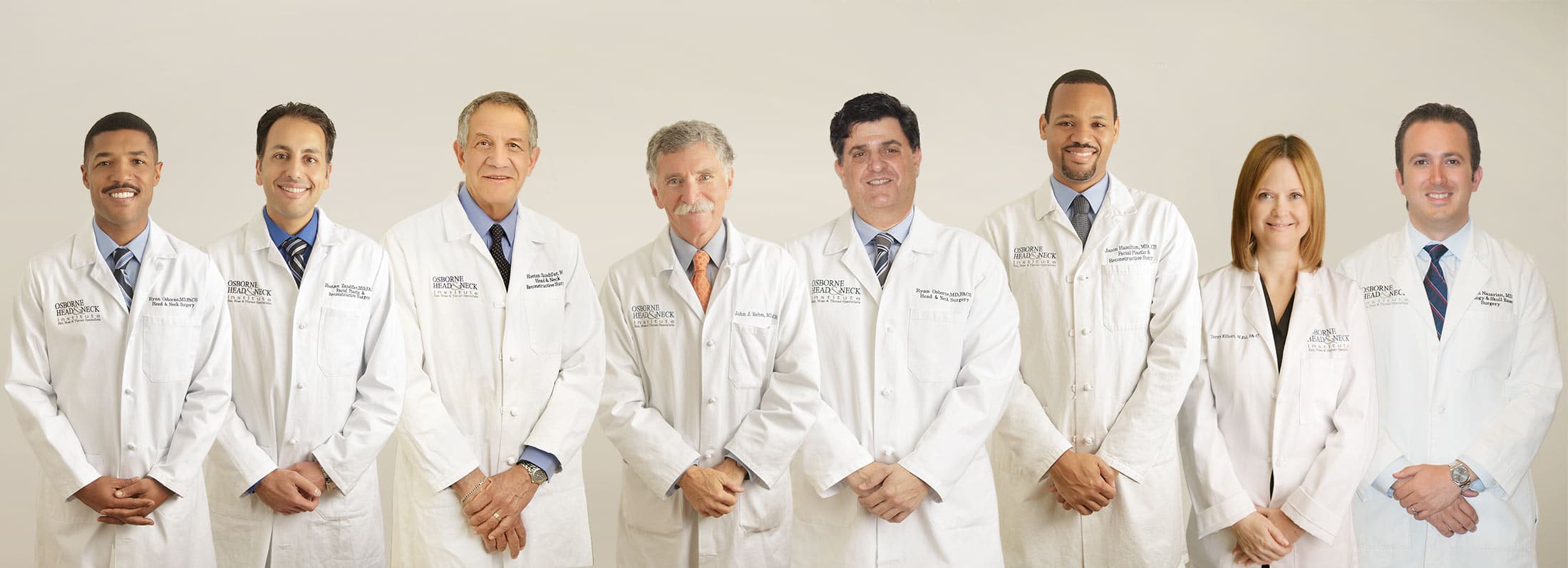A cholesteatoma is a serious but treatable condition that involves abnormal growth of your own skin inside your ear. The skin can grow and erode important structures inside the ear, including your ear drum and ossicles (the bones that vibrate to transfer sound to your brain). In advanced cases of cholesteatoma, the skin can erode the thin bone that separates your ear from the brain. It can also erode structures important for balance, taste, and facial movement. It is very important that you seek a fellowship trained otologist (ear specialist) if you or your doctor suspect a cholesteatoma. If caught early, a cholesteatoma can be treated easily without risking permanent damage to important structures of balance or hearing.

What are the causes of cholesteatoma?
The most common cause of cholesteatoma is chronic ear infections. Other causes include trauma, previous ear surgery, congenital cholesteatoma, sinus infections and allergies, as well as Eustachian tube dysfunction. When the Eustachian tube doesn’t work properly, it leads to chronic negative pressure on the ear drum, causing a retraction and eventually an invagination of skin into the middle ear that starts growing out of control.
What are some symptoms of cholesteatoma?
Early signs:
- Hearing loss (conductive)
- Ear drainage
- Ear Pressure
- Ear Pain
- Recurrent infections
Late signs:
- Dizziness
- Ear Abscess
- Meningitis
- Loss of taste (one side of tongue)
- Facial weakness (one side of face)
How can a cholesteatoma be diagnosed?
The most important step is to have an otologist (fellowship trained ear specialist) look in your ear with an otoscope or an otologic microscope. This can be done in the office on your first visit.
Depending on the exam findings, your otologist may also request an audiogram (hearing test) and a CT scan to better visualize the extent of the cholesteatoma and the status of the important structures behind the ear drum.
What are treatment options for cholesteatoma?
Currently, the only way to clear a cholesteatoma is by surgical excision. A cholesteatoma is usually removed and the ear drum is repaired during the same surgery. This procedure is called a tympanoplasty.
Many times, a cholesteatoma extends to the bone behind the ear and this bone needs to be dissected in order to remove the entire cholesteatoma. This step is called a mastoidectomy and is performed in conjunction with the tympanoplasty. An otologist can get an idea of whether you need a mastoidectomy during the physical exam and after the review of your CT scan.

When a cholesteatoma is advanced, it can begin to erode important structures such as the ear drum, the ossicles (the bones that vibrate with sound signals), the balance system, the facial nerve, and nerve for taste. A CT scan can reveal some of theses defects and give the surgeon an idea of what to prepare for during the surgery. When the bones of hearing are eroded and need to be reconstructed or replaced, the procedure is called an ossicular chain reconstruction.
Most cholesteatomas require a tympanoplasty and mastoidectomy to be performed together in order to remove the cholesteatoma in its entirety. Depending on the extent of the disease, the surgeon may also decide to perform the ossicular chain reconstruction either in the same setting or 6 months after the original surgery. The ossicular chain reconstruction may be delayed if there is too much infection during the first surgery, or if the chance of recurrence is high.
What is the recovery process after removal of cholesteatoma?
The surgery is performed under general anesthesia in an outpatient surgery center. This means that you will be discharged home the same day. The pain is usually easily controlled with simple pain medication. Most patients can go back to light activity at home or in the office the following day.
The otologist usually has the patient come back after 2 weeks for ear packing removal. Patients usually experience the maximum improvement in hearing about 4 to 8 weeks after surgery.
In advanced disease, not all reconstruction can be performed safely and in a sterile fashion. Therefore, the reconstruction of the ossicles may be postponed until all inflammation and infection has resolved. If a staged procedure is needed, most otologists wait at least 6 months before performing the second surgery to reconstruct the ossicles. The second surgery is usually less invasive and shorter than the original surgery. The recovery period is shorter than the first, and patient usually experience maximal improvement in hearing about 4-6 weeks after the procedure.


